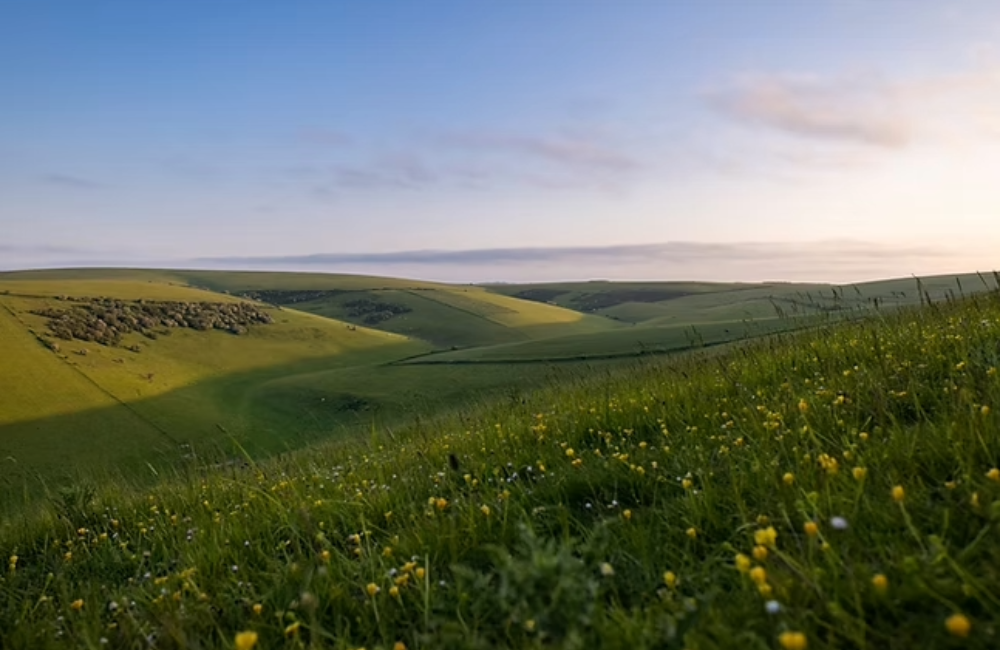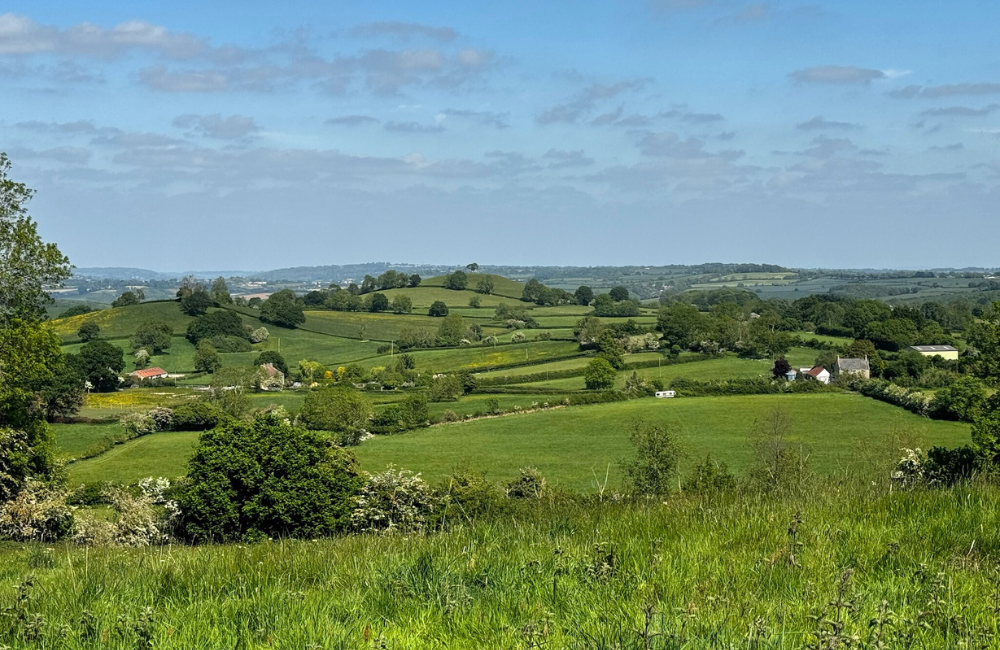28.05.2021
Carbon Accounting and Your Business Footprint
Our approach to business carbon accounting …
)
We look back at the insights from our recent webinar.
The corporate climate conversation has, so far, been dominated by carbon. Companies everywhere are racing to cut emissions, offset what they can’t avoid, and reach the elusive goal of net zero. However, as our ecological crisis deepens, businesses are starting to realise that reducing carbon emissions alone isn’t enough.
Nature itself - the forests, wetlands, grasslands, and species that sustain our lives - is under extraordinary pressure. Human activity has
and two-thirds of the ocean, leaving ecosystems struggling to recover. Protecting and restoring these ecosystems is now becoming part of corporate responsibility.
At Earthly, we recently relaunched our
Planet Earthly
webinar series with a deep dive into this very topic:
How biodiversity credits can fit into a sustainability strategy and provide real business benefits.
We were joined by
, Countryside and Policy Manager at the South Downs National Park Authority, and
, Earthly’s co-founder, who has been at the forefront of developing the UK biodiversity market. Together, they unpacked what biodiversity credits are, why businesses should care, and what challenges lie ahead.

The global voluntary biodiversity credit market remains small (USD 8 million) but could reach USD 69 billion by 2050, as corporate sustainability evolves from carbon reduction to holistic nature recovery - World Economic Frorum.
At their simplest,
represent measurable improvements in ecosystems: restoring a meadow, rewetting peatlands, or creating habitat for pollinators. But unlike carbon, there’s no single metric.
“Carbon is relatively straightforward,” Nick explained. “It comes down to tonnes of CO₂. Biodiversity is far more complex. It’s multidimensional - it’s about species richness, habitat quality, and ecosystem functionality.”
In the UK, biodiversity credits are increasingly tied to the mandatory
policy, which requires developers to deliver measurable ecological improvements. That regulatory push is creating demand, with local authorities and landowners working together to restore habitats that generate credits.
Beyond BNG, other businesses can now purchase
in line with their climate and nature goals. These voluntary investments are a way for companies to go beyond compliance and actively contribute to restoring ecosystems, even when they’re not legally required to do so. They allow organisations to direct funding toward nature recovery in places that align with their values, operations, or supply chains, such as restoring wetlands near agricultural partners, or supporting pollinator habitats close to production sites.
For companies, biodiversity credits can feel like a new frontier. But, as Lorenzo pointed out, they are rapidly becoming part of the sustainability landscape:
“Investors, regulators, and customers are no longer satisfied with carbon neutrality alone. They want to see that businesses are truly nature-positive.”
The business case is compelling:
Risk management
: Companies in agriculture, food, tourism, or real estate are directly exposed to ecosystem decline.
ESG and reputation
: Early adopters demonstrate real leadership by going beyond carbon and aligning with global frameworks like the
, which calls on businesses and private investors to help halt and reverse biodiversity loss by 2030.
Portfolio diversification
: Firms already buying carbon credits can strengthen their sustainability strategies with biodiversity credits.
Brand reputation:
It’s no longer a brand advantage to be addressing a carbon footprint alone.
And, unlike carbon, biodiversity resonates emotionally with people. “Everyone understands birdsong disappearing or wetlands drying up - it’s tangible,” Lorenzo said. That human connection can make biodiversity credits more powerful in stakeholder communications.
One of the most important differences is
fungibility
. Carbon is global - a tonne avoided in Brazil equals a tonne in the UK. Biodiversity is inherently local.
“A restored wetland in Sussex isn’t the same as a rainforest protected in Borneo,” Nick noted. “That’s what makes biodiversity credits so place-specific and often so meaningful.”
For buyers, this means credits come with a story. Companies aren’t just buying abstract units; they’re funding visible change in real landscapes.

A scenic view of the South Downs National Park - the first UK national park to pilot landscape-scale biodiversity credit projects, supporting long-term habitat restoration and nature recovery.
Nick shared how this works in practice. In the
, one of the UK’s largest national parks, the authority supports landowners and farmers to create
habitat banks
. These are areas specifically managed for ecological uplift, generating units that developers can purchase to meet biodiversity obligations.
“Landowners commit for the long term - often 30 years,” Nick explained. “Independent assessors measure the biodiversity gain, and credits are issued. But crucially, this isn’t just paperwork. It’s real change: wildflower meadows planted, hedgerows restored, wetlands revitalised.”
This approach brings multiple wins: developers comply with regulation, landowners are financially rewarded, and local biodiversity thrives.
While the UK’s regulatory framework is leading in Europe, biodiversity markets themselves are not new. Other countries have been experimenting with ways to value and trade nature for over a decade.
In Australia, the
was one of the first formal biodiversity credit systems. It was created by the Victorian Government to help developers compensate for unavoidable impacts on native vegetation. Through BushBroker, landowners who protect or restore habitats can generate biodiversity credits, which are then purchased by developers needing to meet environmental requirements. The result is a functioning market that rewards conservation on private land and ensures biodiversity loss in one area is balanced by gains elsewhere.
In Latin America, biodiversity is often bundled with carbon and community benefits into what are known as
. These projects recognise that restoring nature rarely delivers just one outcome. Reforestation, for example, can capture carbon, restore wildlife habitat, and support local livelihoods all at once. By stacking these benefits, projects can attract diverse funding streams and provide investors with a more holistic environmental and social return. However, this approach also requires strong governance to avoid double-counting and ensure each benefit is transparently measured.
“Internationally, there’s a lot we can learn,” Lorenzo said. “How to avoid double counting, how to ensure permanence, and how to keep ecological integrity while meeting market demand.”
Lessons from other biodiversity credit projects will be crucial as the UK market grows and as more businesses look to biodiversity as part of their sustainability portfolio.
Both speakers were clear: biodiversity credits are no silver bullet.
Measurement complexity
: With multiple metrics in use, buyers can be confused.
Market immaturity
: Standards are still evolving, and fragmentation risks slowing adoption.
Greenwashing
: Without transparency, companies could misuse credits for reputational gain.
Equity
: Ensuring local communities benefit fairly is essential.
“If we don’t get the governance right,” Nick warned, “biodiversity credits could repeat some of the mistakes we’ve seen in voluntary carbon markets.”

Woodland restoration at the Iford Biodiversity Project, South Downs National Park. By supporting projects like this, businesses help restore habitats and strengthen biodiversity.
Despite the challenges, both Nick and Lorenzo emphasised the opportunity for businesses to engage responsibly. The path forward includes:
Aligning credits with broader sustainability strategies, not just offsets.
Supporting projects in regions where companies operate.
Communicating authentically about the habitats and communities involved.
Engaging early to shape standards and gain a reputational advantage.
“Biodiversity credits are often more expensive than carbon credits,” Lorenzo admitted, “but that reflects their premium value. Businesses see them as high-impact contributions.”
closed with a powerful reminder: biodiversity credits are part of a bigger shift. Businesses need to move beyond a narrow focus on net-zero carbon and toward a
nature-positive economy
.
“This is about embedding nature into business strategy,” Nick concluded. “Credits are one piece of the puzzle, but the bigger picture is how we value and protect the ecosystems that underpin our economies.”

Habitat restoration and land rewetting - Timsbury, UK. By investing in this and other biodiversity projects with Earthly, your business is added to our Biodiversity Credit Ledger - a credible and transparent way to share progress with stakeholders and report genuine nature impact without greenwashing.
Biodiversity credits are still emerging, but the momentum is undeniable. For businesses, they offer a way to:
Comply with regulations
Manage ecological risk
Demonstrate leadership
Support local communities and ecosystems.
For society, they provide new funding streams to restore and protect the natural world we all depend on.
At Earthly, we see biodiversity credits as a crucial step toward a truly sustainable future - one where businesses don’t just do less harm, but actively support nature.
Every business has the power to help restore the natural world.
about how you can integrate biodiversity credits into your climate and nature goals. For a deeper dive, explore our
, or watch our
, which answers key questions about biodiversity credits, business value, and what’s next for nature markets.
Related articles